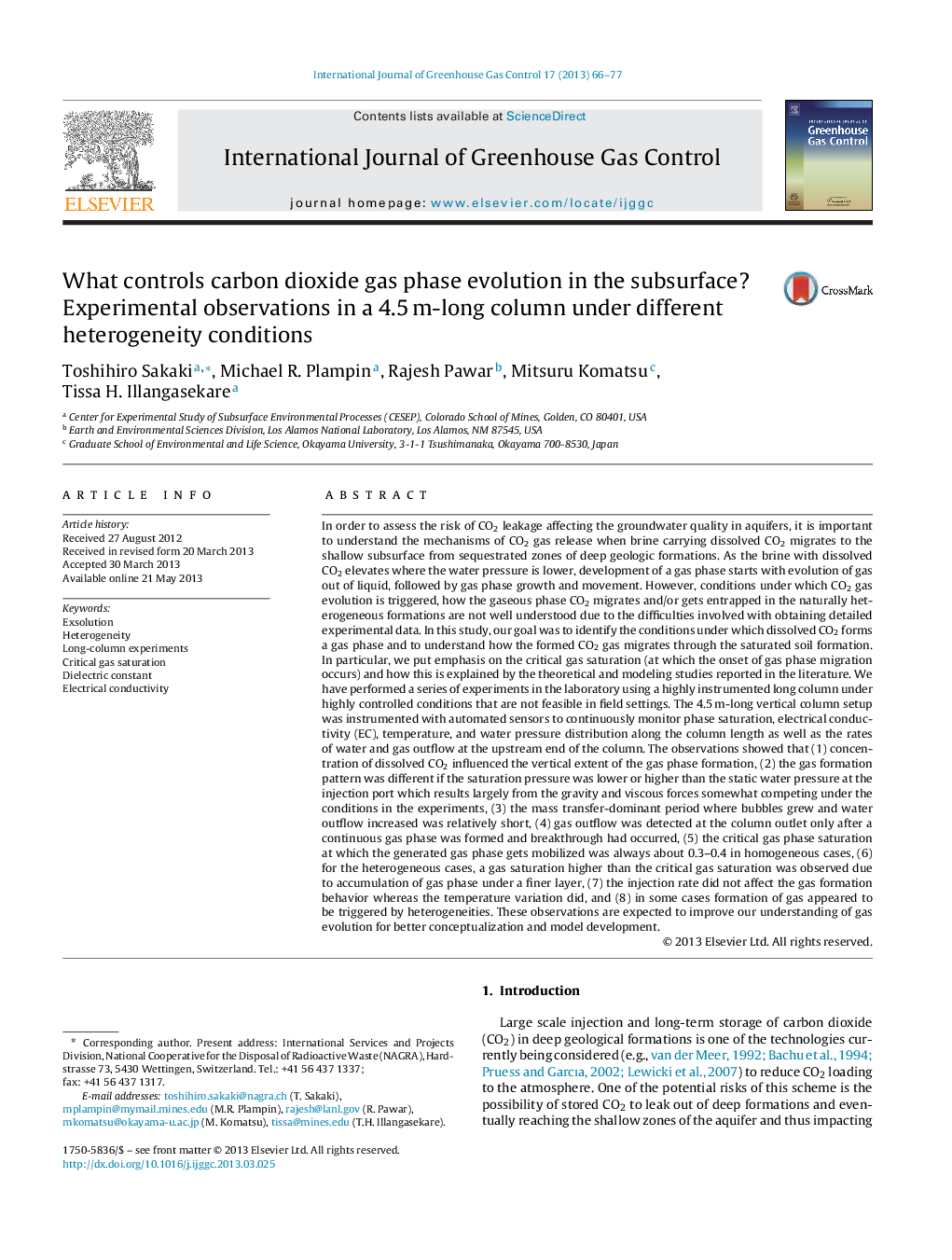| کد مقاله | کد نشریه | سال انتشار | مقاله انگلیسی | نسخه تمام متن |
|---|---|---|---|---|
| 8092009 | 1522004 | 2013 | 12 صفحه PDF | دانلود رایگان |
عنوان انگلیسی مقاله ISI
What controls carbon dioxide gas phase evolution in the subsurface? Experimental observations in a 4.5Â m-long column under different heterogeneity conditions
دانلود مقاله + سفارش ترجمه
دانلود مقاله ISI انگلیسی
رایگان برای ایرانیان
کلمات کلیدی
موضوعات مرتبط
مهندسی و علوم پایه
علوم زمین و سیارات
فرآیندهای سطح زمین
پیش نمایش صفحه اول مقاله

چکیده انگلیسی
In order to assess the risk of CO2 leakage affecting the groundwater quality in aquifers, it is important to understand the mechanisms of CO2 gas release when brine carrying dissolved CO2 migrates to the shallow subsurface from sequestrated zones of deep geologic formations. As the brine with dissolved CO2 elevates where the water pressure is lower, development of a gas phase starts with evolution of gas out of liquid, followed by gas phase growth and movement. However, conditions under which CO2 gas evolution is triggered, how the gaseous phase CO2 migrates and/or gets entrapped in the naturally heterogeneous formations are not well understood due to the difficulties involved with obtaining detailed experimental data. In this study, our goal was to identify the conditions under which dissolved CO2 forms a gas phase and to understand how the formed CO2 gas migrates through the saturated soil formation. In particular, we put emphasis on the critical gas saturation (at which the onset of gas phase migration occurs) and how this is explained by the theoretical and modeling studies reported in the literature. We have performed a series of experiments in the laboratory using a highly instrumented long column under highly controlled conditions that are not feasible in field settings. The 4.5Â m-long vertical column setup was instrumented with automated sensors to continuously monitor phase saturation, electrical conductivity (EC), temperature, and water pressure distribution along the column length as well as the rates of water and gas outflow at the upstream end of the column. The observations showed that (1) concentration of dissolved CO2 influenced the vertical extent of the gas phase formation, (2) the gas formation pattern was different if the saturation pressure was lower or higher than the static water pressure at the injection port which results largely from the gravity and viscous forces somewhat competing under the conditions in the experiments, (3) the mass transfer-dominant period where bubbles grew and water outflow increased was relatively short, (4) gas outflow was detected at the column outlet only after a continuous gas phase was formed and breakthrough had occurred, (5) the critical gas phase saturation at which the generated gas phase gets mobilized was always about 0.3-0.4 in homogeneous cases, (6) for the heterogeneous cases, a gas saturation higher than the critical gas saturation was observed due to accumulation of gas phase under a finer layer, (7) the injection rate did not affect the gas formation behavior whereas the temperature variation did, and (8) in some cases formation of gas appeared to be triggered by heterogeneities. These observations are expected to improve our understanding of gas evolution for better conceptualization and model development.
ناشر
Database: Elsevier - ScienceDirect (ساینس دایرکت)
Journal: International Journal of Greenhouse Gas Control - Volume 17, September 2013, Pages 66-77
Journal: International Journal of Greenhouse Gas Control - Volume 17, September 2013, Pages 66-77
نویسندگان
Toshihiro Sakaki, Michael R. Plampin, Rajesh Pawar, Mitsuru Komatsu, Tissa H. Illangasekare,